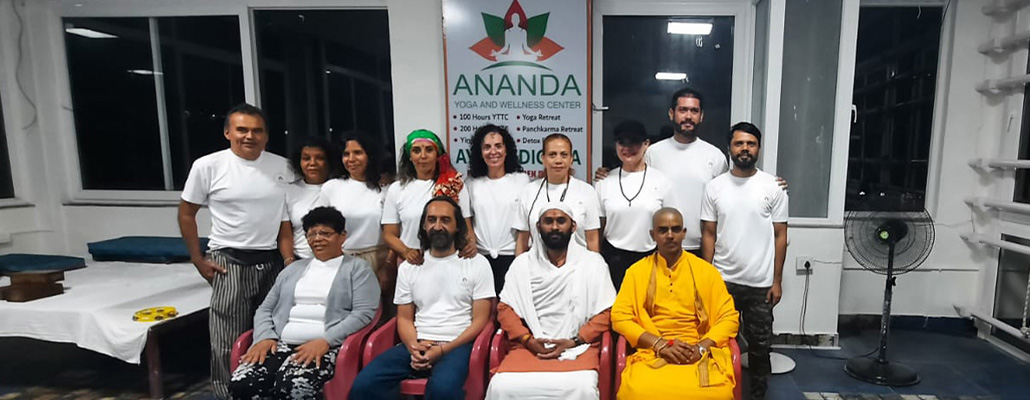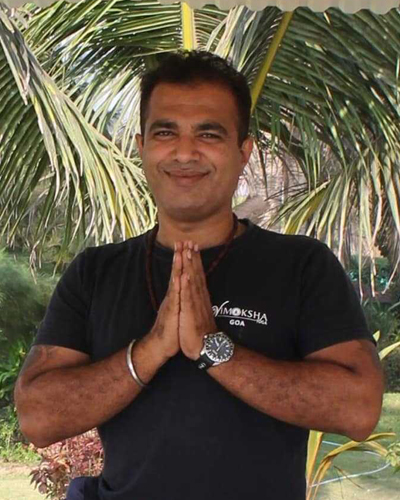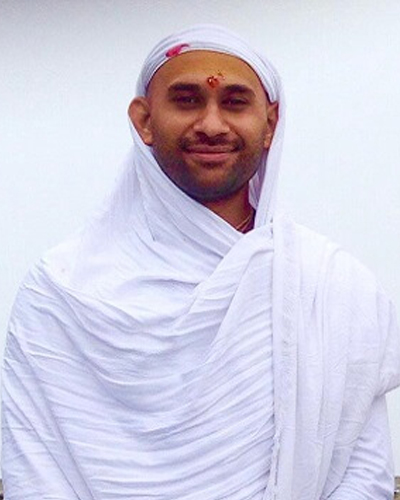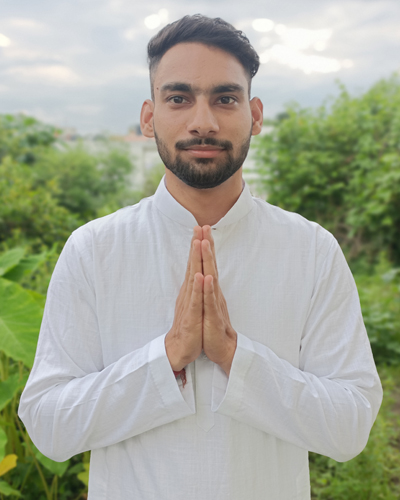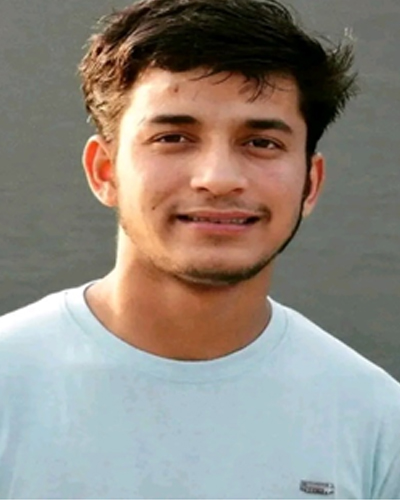200 Hours Vinyasa Ashtanga Yoga TTC, Rishikesh
A 200-hour Vinyasa Ashtanga Yoga Teacher Training Course is ideal for those who want to teach yoga. In this program, you'll become familiar with the procedures of yoga, including the physical and vivacious life structures of the human body. Additionally, you will be taught how to design and lead a healthy life. In addition, you will acquire knowledge of yoga ethics and the significance of respecting students and the community. Several supervised practice sessions, teaching sessions, and observations are typically included in the 200-hour Yoga Teacher Training program. International yoga certification is available through our 200-hour Vinyasa Ashtanga Yoga Teacher Training Course in India. Yoga Alliance USA or World Yoga Alliance issue certifications for this course. You will be able to teach yoga anywhere in the world after completing this certified yoga course in India.
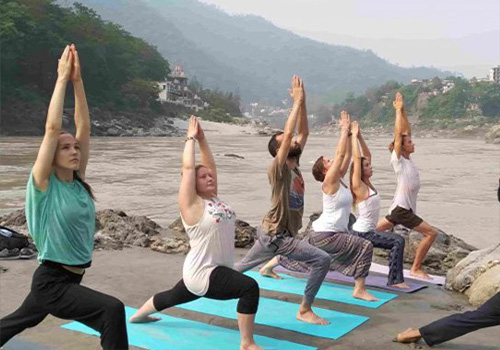
About the course
200-hour Vinyasa Ashtanga Yoga TTC, Rishikesh is a worldwide confirmed Yoga Educator Instructional course. This yoga course would help you learn more about and practice yoga and its fundamental elements. Yoga Alliance USA and World Yoga Alliance's international standards are met and exceeded by Ananda Yoga And Wellness Center 200-hours Vinyasa Ashtanga Yoga Teacher Training.
You'll learn everything there is to know about yoga during this certified yoga course in Rishikesh, India. The course prospectus contains - Asana, Pranayama, Reflection, Bandha, Mudra, Kriya,Mantra, Reasoning, Life Structures, and Physiology.
For those who want to become internationally certified yoga teachers, the 200-hour Vinyasa Ashtanga YTTC program is a unique yoga teacher training course. Join this course and become a Worldwide Confirmed Yoga Instructor. Start your journey toward becoming a competent Yoga Master by achieving Yoga Alliance USA's highest certification, the E-RYT 500.
Best Affordable Price
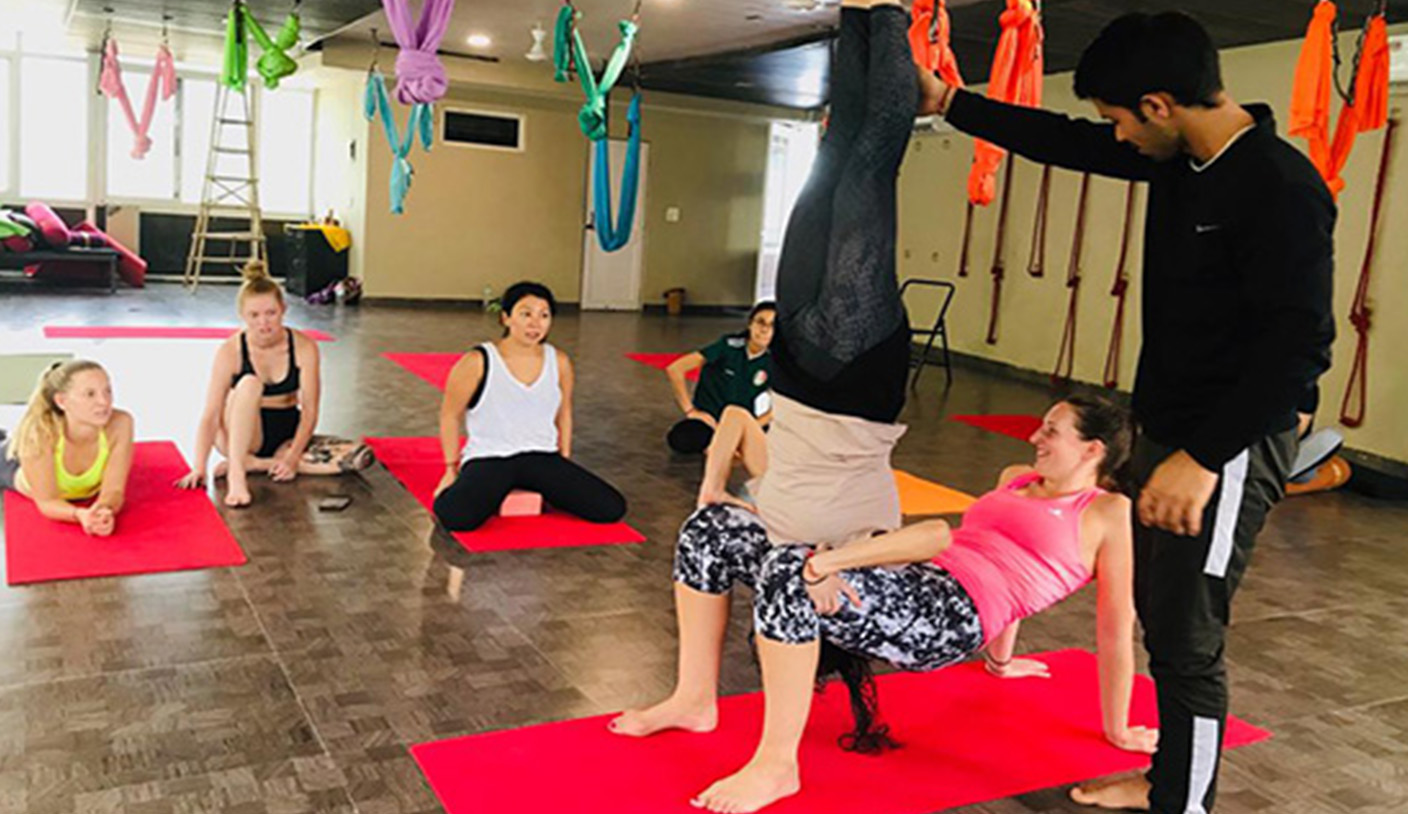
Programme Results:
- a Comprehensive and Extensive Manual,
- Find a way to incorporate yoga into your daily life.
- Genuine Knowledge Based on Traditional Yoga Textbooks, Professional Training
Become a certified Yoga Instructor
If you have any desire to turn into a Certified Yoga instructor, this 200-hour Vinyasa Ashtanga Yoga TTC course will be ideally suited for you. You will learn about every important part of yoga and how it can help you practice and teach yourself.
You must have a solid understanding of yoga teaching techniques and be familiar with Yoga Alliance USA certification requirements to become a qualified yoga teacher. You will receive certification from Yoga Alliance USA after completing this certification course.
The 200 Vinyasa Ashtanga Hours Yoga TTC benefits:
- You would learn from an authentic and credible source.
- Comprehensive understanding of yoga's philosophical and practical aspects.
- Realizing oneself and the benefits of yoga experientially
- Trust in Yoga Science and Reasoning.
- You will be able to experience the much-needed combination of contemporary scientific practices and traditional yoga teachings at our YTTC
- Last but not least, you will be instructed in a genuine and authentic way that exemplifies the true spirit of yoga, and you are expected to do the same for other students.
Reasons to Enrol in 200 Hours Vinyasa Ashtanga Yoga TTC
- One of the five reasons to enroll in this course is that The Ananda Yoga And Wellness Center is run, governed, and maintained by Traditional and Authentic Yogis. As a result, the school guarantees that its students will learn the original and comprehensive form of yoga, both theoretically and practically
- Ananda Yoga And Wellness Center gives its international students International Certification from Yoga Alliance USA, World Yoga Alliance, or the Government of India, allowing them to teach anywhere in the world.
- Ananda Yoga And Wellness Center is of the firm opinion that Yoga Teacher Training should not compromise the Yoga tradition and lineage, but it should also place an emphasis on the most recent scientific discoveries in the fields of health and medicine.
- The educators at Ananda Yoga And Wellness Center are profoundly qualified, and knowledgeable in theoretical as well as practical aspects of yoga. Theories without practical experience are useless, and practices without theories may result in disorders and undesirable outcomes.
- Ananda Yoga And Wellness Center organizes trips for their students to specific locations in India, allowing them to see, learn about, and experience Indian cultures and traditions. This helps them learn more about India's diverse and rich culture and traditions.
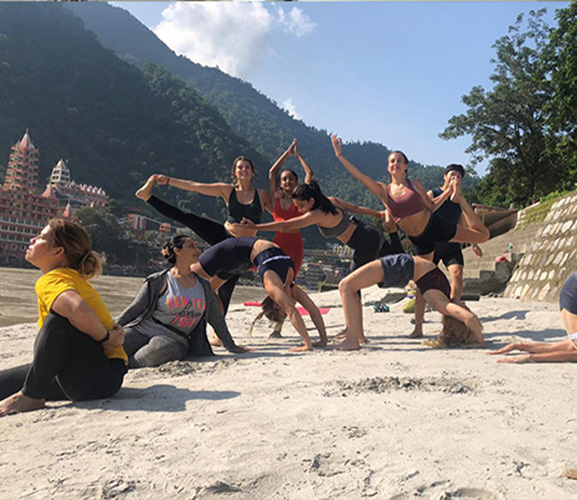
Eligibility requirements for 200 Vinyasa Ashtanga Hours Yoga TTC:-
- Yoga education is the same for everyone, and prior experience or a certificate from a university or college is not required.
- It is necessary to speak English as a first or second language. (Even though we teach in English, we have students who speak a variety of languages. It doesn't matter if you only have a passing understanding. Our teachers will ensure that you comprehend the material.)
- Students between the age of 15 to 60 years can join the TTC at Ananda Yoga And Wellness Center.
- Students must keep their egos and positions outside the studio and be open-minded.
- Students who show separation with respect to religion, nations, class, or position won't be permitted to enlist at our school.
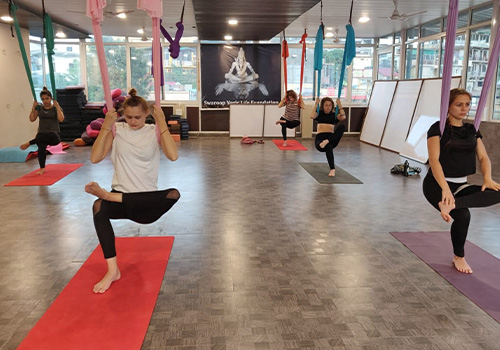
200 HOUR YTTC DATE
Daily Schedule
| Time | Activity |
|---|---|
| 05:00 | Morning bell |
| 05:30 - 06:00 | Morning tea |
| 06:00 - 06:30 | Pranayama & Shatkarma |
| 06:30 - 08:30 | Vinyasa Flow Yoga |
| 08:30 - 09:30 | Breakfast |
| 09:30 - 10:30 | Anatomy and Physiology |
| 11:00 - 12:30 | Yoga Philosophy |
| 12:30 - 13:00 | Lunch |
| 13:15 - 14:45 | Study Time and Relax |
| 15:00 - 16:00 | Postures Alignment |
| 16:00 - 17:30 | Ashtanga Yoga Asana |
| 18:00 - 19:00 | Meditation/Mantra Chanting |
| 19:15 - 20:15 | Dinner time |
| 20:15 - 21:45 | Self Study - Rest time |
| 22:00 | Sleep (Light Closed) |
Yoga Philosophy Curriculum
200 Hours Yoga TTC Semester 1
- Introduction to Yoga
- Origin of Yoga
- Different paths of Yoga
- Ashtanga Yoga (8 limbs)
- Yama
- Niyama
- Asana
- Pranayama
- Pratyahara
- Dharna
- Samadhi
200-Hour Yoga TTC Semester 2
- Hatha Yoga
- Obstacles in Yoga
- Panch Kosha
- Annamaya Kosha
- Pranamaya Kosha
- Manomaya Kosha
- Jnanamaya Kosha
- Anandamaya Kosha
- Sankhya Darshan
- Vedanta Darshan
Human Anatomy Physiology and Yoga
SEMESTER 1
- Introduction
- Skeletal System
- Joints and Range of Motion
- Ashtanga Yoga (8 Limbs)
- Muscular System
- Niyama
- Postural imbalances
- Physiology of Asana
- Back Bend
- Forward Bend
- Twist
- Inversion
- Written Assignment
SEMESTER 2
- Digestive System
- Respiratory System
- Circulatory System
- Physiology of Pranayama
- Nervous System
- Endocrine System
- Stress and Homeostasis
- Physiology of Meditation
- Lesson Planning, Practical Assessment, and Written Assignment
Ashtanga Yoga
Ashtanga yoga, which consists of eight spiritual practices that coordinate the body's movements with the breath and the mind, is a method of internal purification for unveiling the universal self.
Standing Pose
- Hasta Padangusthasana & Pada Hastasana
- Utthita Tri Konasana
- Parivrtta Tri Konasana
- Utthitan Parsva Konasana
- Parivrtta Parsva Konasana
- Prasarita Padottanasana A, B, C & D
- Utthita Parsvottanasana
- Utthita Hasta Padangusthasana
- Utthita Parsvasahita
- Utthita Eka Padasana
- Ardhabaddha Padmottanasana
- Ardhabaddha Padmottanasana
- Virabhadrasana A, B and C.
Primary Asanas
- Paschimottanasana A, B and C
- Purvottanasana
- ArdhaBaddha Padma Paschimottanasana
- Tirieng Mukha Eka Pada Paschimottanasana
- JanuSirsasana A, B and C
- Marichyasana A, B and D
- Navasana
- Lolasana
- BhujaPidasana
- Kurmasana
- GarbhaPindasana
- Kukkutasana
- BaddhaKonasana A & B
- Konasana A & B
Intermediate Asanas
- Salabhasana A & B
- Dhanurasana
- Ustrasan
- Kapotasana A & B
- SuptaVajrasana
- BakasanaA
- Bakasana B Jump
- Ardha Matsyendrasana
- Yoga Nidrasana
- Tittibhasana
- PichaMayurasana
- PichaMayurasana
- Gomukhasana A & B
- Gomukhasana A & B
Advanced A (optional)
- Kasyapasana
- Bhairavasana
- UrdhvaKukkatasana A
- Galavasana
- EkaPadaViparitaDandasna
- VipritaSalabhasana
- GandhaBherundasana
- Hanumanasana
- Natrajasana
- Raja Kapotasana
Hatha Yoga
Hatha yoga is considered to be one of the best forms of exercise all around the world and helps with weight loss, improving health and overall condition of the body. It is advised to practice hatha yoga under the guidance of experts as it is considered to be one of the difficult parts of learning yoga.
Joints Moments
- Surya Namaskara (Sun Salutation) & Chandra Namaskara (Moon salutation)
- Yoga Mudrasana
- Matsyasana
- Gupta Padmasana
- BaddhaPadmasana
- Lolasana
- Kukkutasana
- Garbhasana
Backward bending Asanas
- SaralBhujangasana (Easy Cobra Pose)
- Bhujangasana (cobra Pose)
- TiryakaBhujangasana (twisting cobra pose)
- Sarpasana (snake pose)
- ArdhaShalabhasana (half locust pose)
- Shalabhasana (locust pose)
- SaralDhanurasana (easy bow pose)
- Kandharasana (shoulder pose)
- ArdhaChandrasana (half-moon pose)
- Setu Asana (bridge pose)
- Gomukhasana (cow’s face pose)
Forward bending Asanas
- Paschimottanasana (back stretching pose)
- GatyatmakPaschimottanasasna (dynamic back stretch pose)
- PadaPrasarPaschimottanasana (legs spread back stretch pose)
- JanuSirshasana (head to knee pose)
- Ardha Padma paschimottanasana (half lotus back stretching pose)
- Hasta PadaAngushthasana (finger-to-toe stretch)
- Padahastasana (hand-to-foot pose)
- SirshaAngusthaYogasana (head-to-toe pose)
- Utthitajanusirshasana (standing head between knees pose)
- Spinal twisting Asanas
- ArdhaMatsyendrasana (half spinal twist)
- ParivrittiJanuSirsasana (spiralled head to knee pose)
Advanced pose
- Poornabhujangasana (full cobra pose)
- Kurmasana (tortoise pose)
- Poornashalabhasana (Full locust pose)
- PoornaDhanurasana (full bow pose)
- Dhanu-rakarshan-asana (archer’s pose)
- Chakrasana (wheel pose)
- Hanumanasana (leg-splitting pose)
- Poornamatsyendrasana (full spinal twist pose)
- Mayurasana (peacock pose)
- Padma mayurasana (Lotus or bound peacock pose)
- Gorakshasana (Yogi Gorakhnath’s pose)
- Astavakrasana (eight-twist pose)
- Vrischikasana (scorpion pose)
- Inverted pose, balancing pose, and core poses.
Shatkarma (Internal cleansing)
Shatkarma is a Sanskrit word that is made of 2 different words Shat plus Karma and also known as Shatkriya. This is a traditional Yogic cleansing technique that is very effective and good to remove many illnesses and open the body blockage
- Agni Saar
- JalNeti
- RuberNeti
- Tirieng Mukha Eka Pada Paschimottanasana
- Sutra Neti
- Dand
Meditation
- Candle Meditation
- Mantra chanting meditation
- Breathing. meditation
- Bhajan/Kirtan
- Trataka
- Silence practice meditation
Human Anatomy
The basic structure and function of the organs and system are very important for the practitioners so that their work as yoga teachers can be enhanced. Knowing the different types of joints and their range of motion helps our students to be safe from injuries and also keeps safe their students after they start teaching as a teacher.
- Types of bones
- Circulatory system
- Types of heart block
- Skeletal system
Yoga Philosophy
Yoga Philosophy includes theory related to yoga this part of the 200-Hour Yoga TTC at Rishikesh Yoga Teacher Training Centre covers the following topics:
- Introduction of Yoga
- Yoga Pantanjali sutra
- 5 basic Element
- Injuries & rest
- Integrating Yoga into daily practice
- Principle of Yoga
- 8 limbs of Yoga
- Yoga therapy
- Yoga for stress, Migraine, and Insomnia
- Yoga for Hypertension
- Yoga for heart problems, Blood pressure, and Diabetic.
- Three Dosha
- The Nadi and kundalini.
- Basic knowledge of Chakra and Ayurveda
- Yogic diet
- Difference between Sattvic & Tamasic food.
- Group discussion
- Doubt Clearing
Teaching methodology
The teaching methodology is one of the most important parts of the 200-Hour Yoga TTC in Rishikesh as our students will learn the following:
- How to conduct a class
- Classroom management
- How to get in and come out from the posture
- How to assist & help while teaching the class
- What kind of words you should be used as a yoga teacher
- What makes you different than other teachers in terms of teaching?
- Which kind of asanas you should recommend for a different health issue
- How to use belts, bolster, bricks, and chair during the class adjustment
